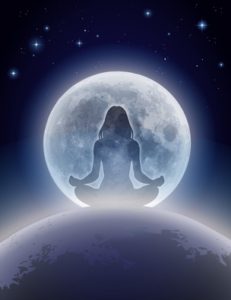 The effect of practicing yoga to promote restful sleep is well documented and as insomnia is a problem that the majority of people face at some time in their lives, a cure that does not rely on chemically-induced sleep is a welcome prospect. Having a good-quality mattress and abstaining from caffeinated drinks and alcohol before you go to bed is essential to promote a good-night sleep, but including some yogic practice may further aid in finding the perfect remedy for a restless mind.
The effect of practicing yoga to promote restful sleep is well documented and as insomnia is a problem that the majority of people face at some time in their lives, a cure that does not rely on chemically-induced sleep is a welcome prospect. Having a good-quality mattress and abstaining from caffeinated drinks and alcohol before you go to bed is essential to promote a good-night sleep, but including some yogic practice may further aid in finding the perfect remedy for a restless mind.
But what is it actually about yoga that allows us to switch off and restore body and mind?
Yoga works not because of some magic pose but through the combined effect of conscious breathing, restorative postures and mindful meditation.
Preparing for bedtime by including just 10 minutes of a combination of deep long breaths, calming postures and stilling of the mind, can change the way you think about sleep. Particularly if your stress levels are high, you may find your overactive mind thinking more about not being able to sleep and entering the vicious sleep-deprivation cycle: breaking that cycle can be done through the practice of yogic breathing (pranayama) and yoga postures (asana).
The most important aspect is to form a habit of developing and looking forward to your yoga bedtime ritual: maybe by dimming the light or playing some soft, calming music. Start your yoga bedtime ritual by sitting on the bed (or on a cushion on the floor next to it) in a comfortable position and draw the mind to your breath. If your breathing tends to be fast and shallow, try to focus initially on just lengthening the exhalation: on the last part of the exhalation, gently draw the tummy in to let all of the remaining old air exit the lungs and the next inhale will follow with greater depth and calmness.
If you feel thoughts arising, try and treat them like waves: let them come and also let them go.
Now you may want to add some postures to your ritual: start by lying down and drawing both knees gently into the chest, hugging the knees with both hands and gently rocking from side to side. Make sure that the movements are done slowly and in sync with your breath.
Then, release one leg to the bed and gently pull the other knee closer to your chest, letting the leg relaxed as you just use the hands to keep the knee close to the chest; after 5 long breathes, change sides.
Then, roll over to your right side and come on to your knees, feet lightly touching and knees hip-width apart and come into ‘Child’s pose’ by letting the forehead rest on the bed and the sides of the chest being supported by your thighs; if you have tight hips or back issues, place a pillow between your calves and thighs and another pillow in front of you and turn the head to one side. After a few minutes, turn the head to the other side to even out the spine.
Lastly, turn around to face the wall with one side of your hips, recline to the side and as you recline, let the legs walk up the wall and slowly move the upper body, so that you are at a 90° angle to the wall, with your bottom touching (or near) the wall and legs up the wall.
This posture is particularly calming as it reverses the blood flow. For some extra luxury, place an eye bag over your eyes and enjoy the delicious feeling of complete relaxation.
For more relaxing and restorative yoga postures, try Yogita Yoga’s Restorative Yoga classes or got to to our FAQ page to find out more about yoga and its health benefits

